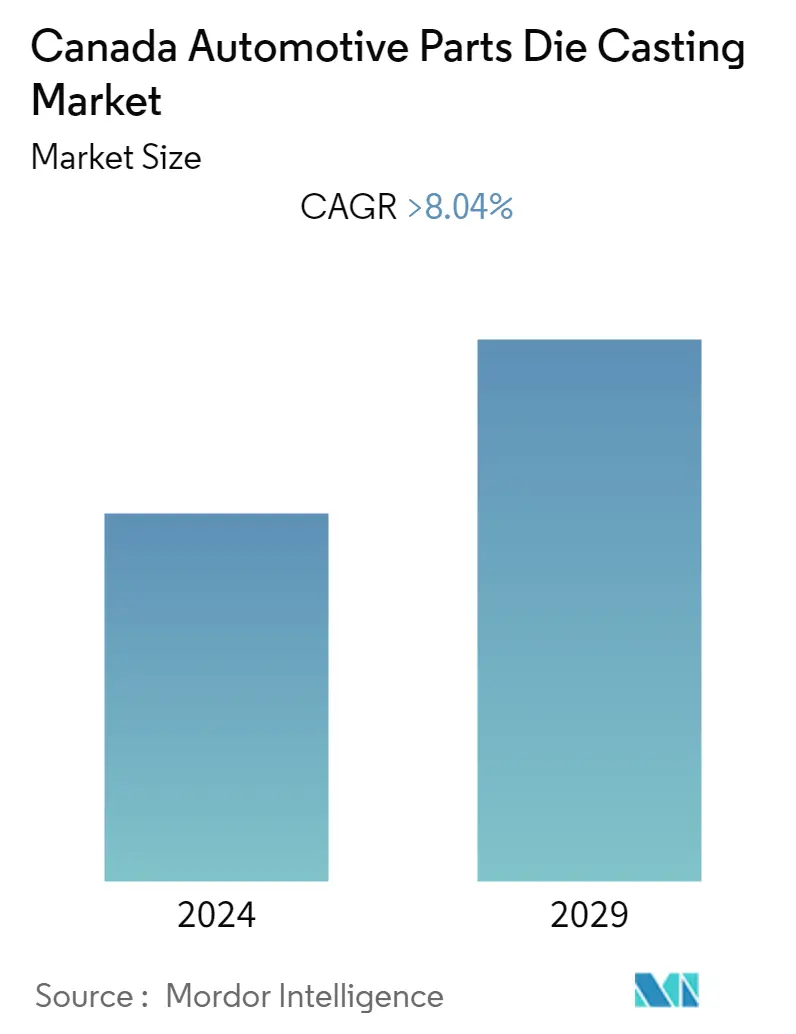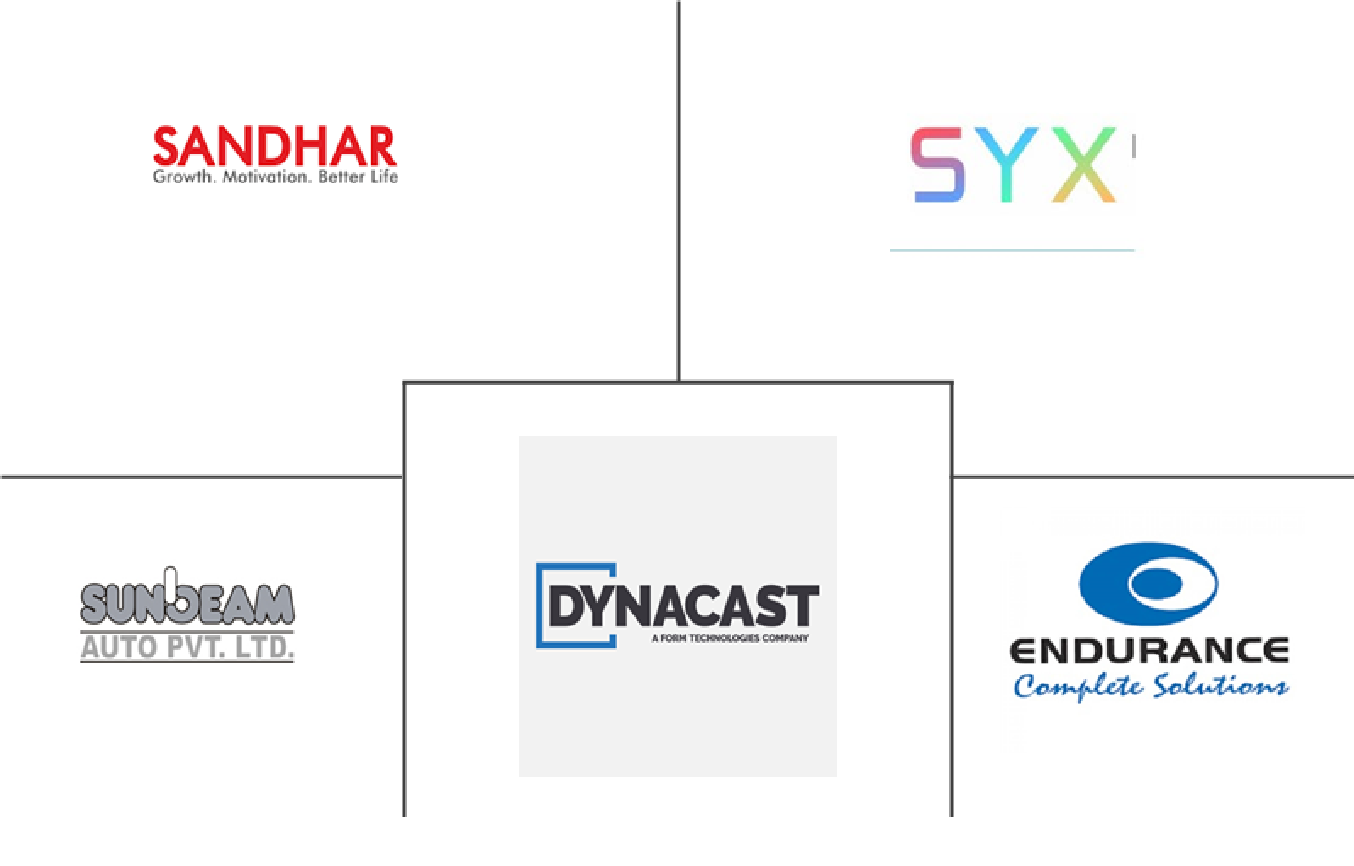Market Size of Canada Automotive Parts Die Casting Industry

| Study Period | 2019 - 2029 |
| Base Year For Estimation | 2023 |
| Forecast Data Period | 2024 - 2029 |
| Historical Data Period | 2019 - 2022 |
| CAGR | > 8.04 % |
| Market Concentration | Medium |
Major Players
*Disclaimer: Major Players sorted in no particular order |
Need a report that reflects how COVID-19 has impacted this market and its growth?
Canada Automotive Parts Die Casting Market Analysis
The Canada automotive parts die-casting market was valued at USD 0.88 billion, and it is expected to reach USD 1.4 billion by registering a CAGR of 8.04% during the forecast period.
- The COVID-19 pandemic negatively impacted the market studied as initial lockdowns and travel restrictions resulted in low demand for car rental services. However, post-pandemic, with ease of restrictions, the demand is expected to restore back during the forecast period.
- Die casting is an effective and economical process that can be molded into various forms. High-speed production, high dimension accuracy and stability, strength, and simple assembly is the reason for the wide use of die-casting materials in the automotive industry. Most of the applications in the automotive industry are fulfilled by this die-casting process.
- To meet the emissions regulations and policies, original equipment manufacturers (OEMs) are trying to reduce the weight of automobiles by employing lightweight non-ferrous metals. The die-casting process has been adopted as the main strategy. The die-casting process has many advantages compared to traditional methods. High-speed production, accuracy, stability, strength-to-weight ratio, better finish, and simple assembly.
- The high cost associated with metal dies means large capital is required, and this process is profitable only for high-volume production. This process is limited to metals with high fluidity, and the casting weight must be between 30 grams and 10 kilograms. This process might result in porosity. This prevented the usage of any heat treatment or welding process on the surface. Also, this process is only for parts in which softness is required. Parts with hardening and tempering cannot be made with this process. OEMs are working on improving the technology, and this market is expected to grow during the forecasted period.
- Canada's average vehicle fuel economy is one of the lowest in the world, consuming an average of 8.9 liters of gasoline per 100 kilometers. Because CO2 emissions are related to fuel economy, the Canadian government is taking steps to reduce the emissions, which will have a positive impact on market growth during the forecasted period.
